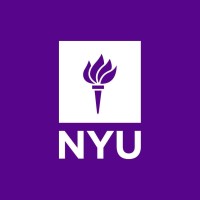Company Cyber Security Posture
NANA
NA Company Details
NA
NA
NA
NA
NA
NA
Scan still pending
NA
NA
Between 200 and 800
This score is AI-generated and less favored by cyber insurers, who prefer the TPRM score.
 NA Global Score
NA Global Score.png)

Company Scoring based on AI Models
| Model Name | Date | Description | Current Score Difference | Score |
|---|---|---|---|---|
| AVERAGE-Industry | 03-12-2025 | This score represents the average cybersecurity rating of companies already scanned within the same industry. It provides a benchmark to compare an individual company's security posture against its industry peers. | N/A | Between 200 and 800 |
Company Cyber Security News & History
| Entity | Type | Severity | Impact | Seen | Url ID | Details | View |
|---|
Company Subsidiaries

NA
Access Data Using Our API

Get company history
.png)
NA Cyber Security News
Johns Hopkins students thwart fitness tracker hackers
In a new course, students prepare for the FDA's ramped up security requirements for insulin pumps, pacemakers, and other wearables.
A Conversation with Janet Rathod
JANET RATHOD: Everybody has been very welcoming. I would say the number-one thing that has stood out to me about the IT teams at Johns Hopkins — ...
Johns Hopkins appoints cybersecurity chief
Johns Hopkins appoints cybersecurity chief. Janet Rathod, who joins the system from Citigroup, will succeed long-time chief information security ...
Best Master’s in Cybersecurity Online Degrees of 2025
Are you a tech professional interested in the best online master's in cybersecurity programs? Check out our guide to learn everything you ...
Janet L. Rathod named chief information security officer at Johns Hopkins
Janet L. Rathod named chief information security officer at Johns Hopkins. She joins the university and health system from Citigroup, Capital ...
Johns Hopkins University and Health System target of cybersecurity attack
BALTIMORE -- Members of the Johns Hopkins community were alerted to a cybersecurity attack against Johns Hopkins University and Health System ...
Xiaofeng Wang Disappears After FBI Raids On His Homes
Xiaofeng Wang, a well-respected computer scientist and professor at Indiana University, has suddenly vanished along with his wife, Nianli Ma. The couple's ...
Johns Hopkins APL Hosts Workshop to Train Tomorrow’s Cyber Defenders
30 high school students will gather at the Johns Hopkins Applied Physics Laboratory (APL) in Laurel, Maryland, for the High School Cybersecurity Workshop.
Johns Hopkins to launch degree program in cybersecurity and policy
The Johns Hopkins University School of Advanced International Studies on Wednesday announced plans to launch an advanced academic program ...

NA Similar Companies

University of Louisville
The University of Louisville is a state supported research university located in Kentucky's largest metropolitan area. It was a municipally supported public institution for many decades prior to joining the university system in 1970. The University has three campuses. The 287-acre Belknap Campus is

University of Oxford
Ranked number one in the world in the 2023 Times Higher Education World Rankings, we are at the forefront of the full range of academic disciplines, including medical sciences; mathematical, physical and life sciences; humanities; and social sciences. As the oldest university in the English-speaking

Indiana University Bloomington
Indiana University Bloomington is the flagship residential, research-intensive campus of Indiana University. Its academic excellence is grounded in the humanities, arts and sciences, and a range of highly ranked professional programs. Founded in 1820, the campus serves more than 42,000 undergradua

New York University
Founded in 1831, NYU is one of the world’s foremost research universities and is a member of the selective Association of American Universities. The first Global Network University, NYU has degree-granting university campuses in New York and Abu Dhabi, and has announced a third in Shanghai; has a do

Center of the American West, University of Colorado Boulder
The Center of the American West takes as its mission the creation of forums for the respectful exchange of ideas and perspectives in the pursuit of solutions to the region's difficulties. We at the Center believe that an understanding of the historical origins of the West's problems, an emphasis on

University of South Africa/Universiteit van Suid-Afrika
The University of South Africa is a comprehensive, open learning and distance education institution. We produce graduates who have what it takes to succeed at open distance learning: diligence, determination and commitment. Our graduates go on to make significant contributions to society and assist

Frequently Asked Questions
Explore insights on cybersecurity incidents, risk posture, and Rankiteo's assessments.
NA CyberSecurity History Information
How many cyber incidents has NA faced?
Total Incidents: According to Rankiteo, NA has faced 0 incidents in the past.
What types of cybersecurity incidents have occurred at NA?
Incident Types: The types of cybersecurity incidents that have occurred include .
Additional Questions
What Do We Measure?
















Every week, Rankiteo analyzes billions of signals to give organizations a sharper, faster view of emerging risks. With deeper, more actionable intelligence at their fingertips, security teams can outpace threat actors, respond instantly to Zero-Day attacks, and dramatically shrink their risk exposure window.
These are some of the factors we use to calculate the overall score:
Identify exposed access points, detect misconfigured SSL certificates, and uncover vulnerabilities across the network infrastructure.
Gain visibility into the software components used within an organization to detect vulnerabilities, manage risk, and ensure supply chain security.
Monitor and manage all IT assets and their configurations to ensure accurate, real-time visibility across the company's technology environment.
Leverage real-time insights on active threats, malware campaigns, and emerging vulnerabilities to proactively defend against evolving cyberattacks.




